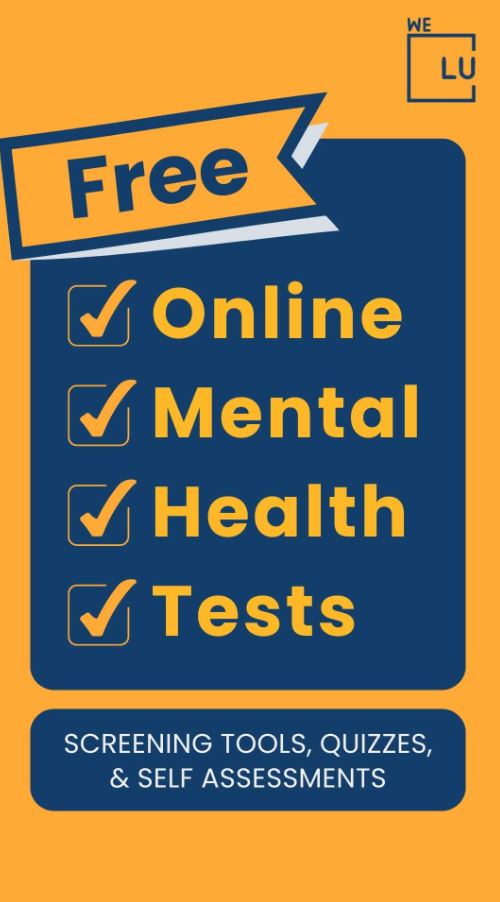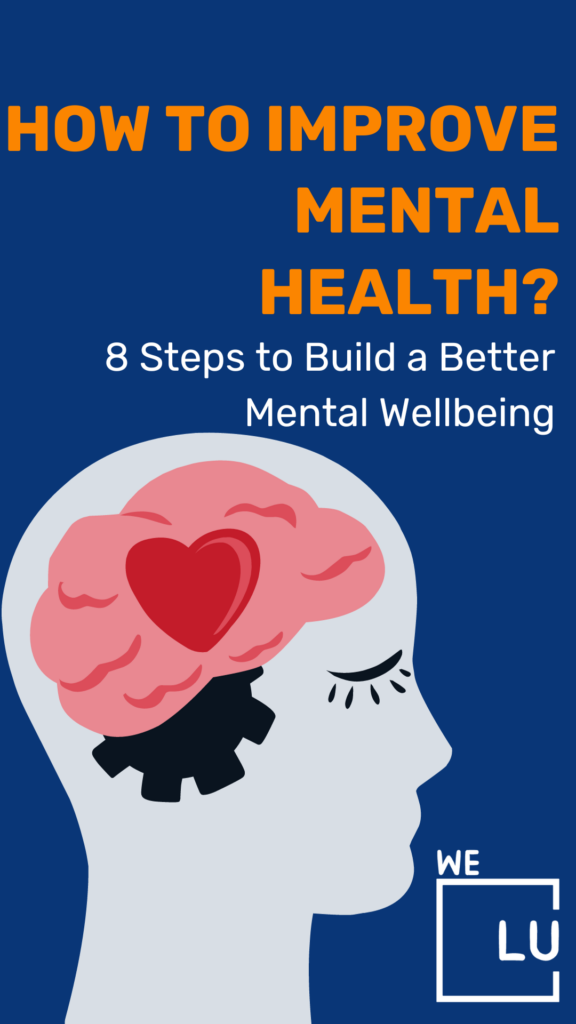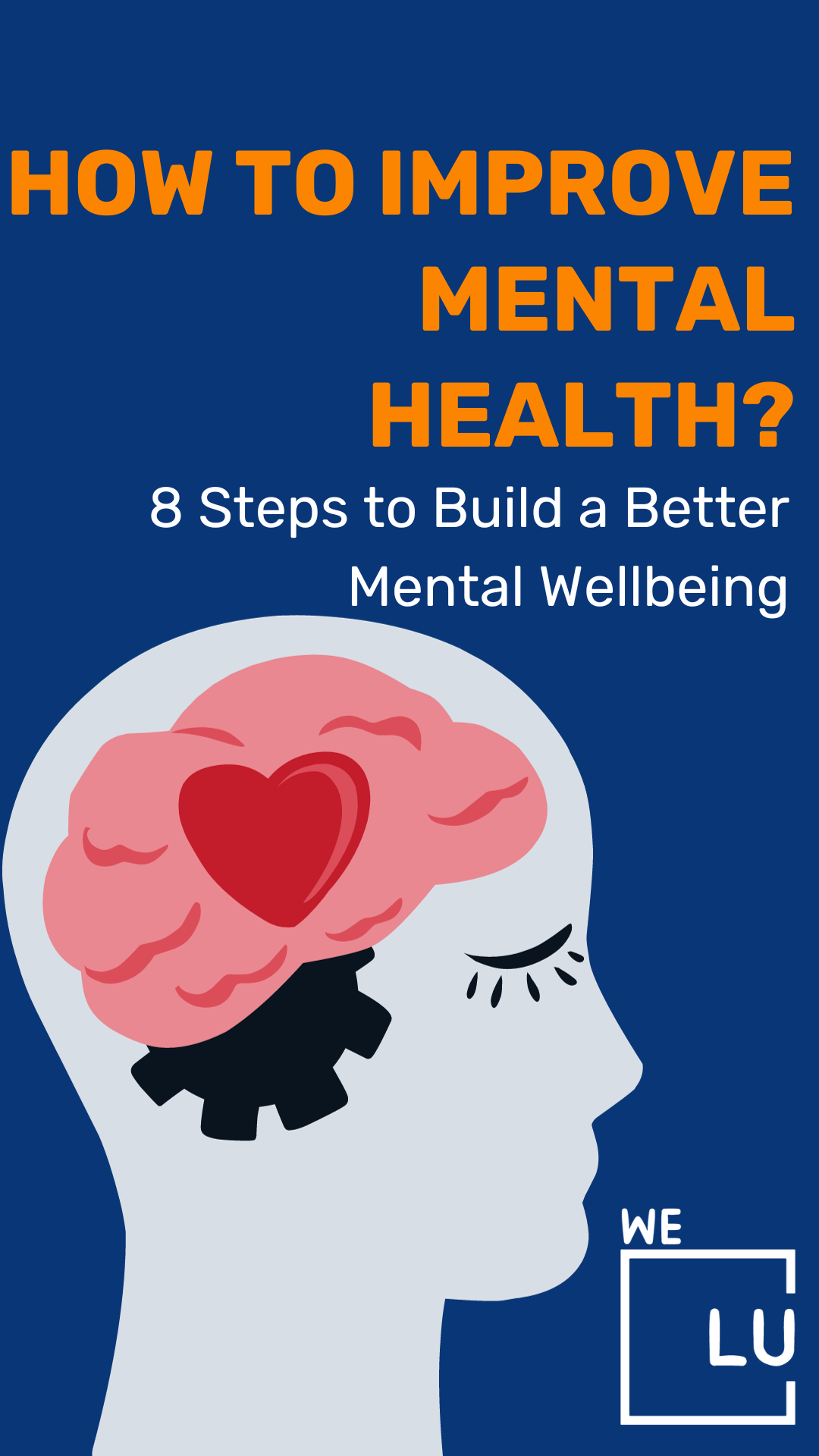Dissociative Experiences Scale
Please take the following quiz to assess if you are experiencing signs and symptoms of having dissociative experiences. Ensure you answer the questions honestly and thoroughly, reflecting your current emotional state rather than how you aspire to feel. It is important to remember that seeking help is always an option, regardless of the time that has passed. Let’s begin with the “Dissociative Experiences Scale Assessment” from We Level Up’s treatment center network.
Dissociation is a phenomenon that can be encountered by many individuals at various points in their lives. When experiencing dissociation, you might sense a disconnection from yourself and the surrounding world. This could manifest as feelings of detachment from your own body or a perception that the environment around you is unreal.
Some common behavioral symptoms of dissociation include:
- Feeling like you are outside your body.
- Experience a sense of emotional numbness or detachment.
- Experience a distorted perception of time.
Please complete the free Dissociative Experiences Scale Assessment to gain insights into your circumstances. This concise Dissociative Experiences Scale Assessment aims to identify behavioral patterns that may indicate a tendency toward dissociation. While it can provide valuable information, it is essential to note that it is not intended as a comprehensive diagnosis or for diagnosing a specific type of dissociation. Depending on your responses, you may receive a potential indication of dissociation. If so, we are here and prepared to offer assistance. However, consulting with a healthcare professional for a clinical diagnosis is crucial. Please feel free to contact us 24/7 with any questions, and rest assured that no obligations are involved.
Take Our Free Dissociative Experience Scale
Take Our Dissociative Experiences Scale II Online Confidential Results
The Dissociative Experiences Scale (DES) is a self-report questionnaire designed to measure the frequency and severity of dissociative experiences. Dissociation involves a disruption in the normal integration of consciousness, memory, identity, and perception. The DES is commonly used as a screening tool for dissociative disorders and to assess the extent of dissociative symptoms in individuals.
*By taking this free quiz, you may obtain your results online and in your email box. You’ll have the opportunity to opt-in to learn more about your symptoms, talk to a mental health consultant and join our newsletter. Rest assured your information is private and confidential. Results, consultations and assessment are provided without any cost to you and without any obligation. If you do not wish to provide your contact information, you may omit it during your quiz. Thank you for opting in and participating. To you best of health.
How Does An Adolescent Dissociative Experiences Scale Differ From An Adult Dissociative Experiences Scale?

The Adolescent Dissociative Experiences Scale (A-DES) and the Adult Dissociative Experiences Scale (DES) are both tools designed to measure dissociative experiences, but they are tailored for different age groups. Here are some key differences:
- Age Group Targeted:
- A-DES: Specifically designed for adolescents, typically aged 11 to 18.
- DES: Geared towards adults, typically individuals aged 18 and above.
- Language and Content:
- A-DES: The language and content of the questions in the A-DES are adapted to be more age-appropriate for adolescents. The questionnaire may use terminology and examples that resonate with the experiences of teenagers.
- DES: Tailored to adults’ cognitive and emotional maturity, with questions and content reflecting the broader life experiences of individuals in this age group.
- Developmental Considerations:
- A-DES: Takes into account the unique developmental challenges and experiences of adolescence, including issues related to identity formation, peer relationships, and family dynamics.
- DES: Addresses the broader spectrum of adult experiences, which may include more complex life situations, relationships, and responsibilities.
- Norms and Scoring:
- A-DES: The scoring and interpretation of results are based on norms established for the adolescent population.
- DES: Norms and scoring focus on adults, considering the variability in dissociative experiences within this age group.
- Clinical Relevance:
- A-DES: Clinically relevant for assessing dissociation in adolescents, particularly in the context of trauma or stressors that are more common in this age group.
- DES: Widely used in clinical settings to evaluate dissociative experiences in adults, often as part of a comprehensive assessment for various mental health conditions.
In summary, while both the Adolescent Dissociative Experiences Scale and the Adult Dissociative Experiences Scale aim to measure dissociation, they are differentiated by their target age groups, language, content, and consideration of developmental factors. Each scale is tailored to capture the unique experiences and challenges individuals in the specified age range face.
The Benefits Of Taking Our Dissociative Experience Scale DES
Engaging in our Dissociative Experiences Scale (DES) offers several valuable benefits for individuals seeking insights into their mental health. Here are the key advantages:
- Self-Reflection and Awareness:
- Completing the DES encourages individuals to reflect on and become more aware of their dissociative experiences. This heightened self-awareness is a crucial first step toward understanding one’s mental and emotional well-being.
- Identification of Dissociative Patterns:
- The DES provides a structured framework to identify and quantify dissociative patterns. This can help individuals recognize specific situations or triggers that may contribute to dissociation, fostering a deeper understanding of their experiences.
- Communication with Mental Health Professionals:
- The results of the DES serve as valuable information for mental health professionals. Individuals can share their scores and specific responses, facilitating more informed discussions during therapy or counseling sessions.
- Personalized Treatment Planning:
- Mental health professionals can use the DES results to tailor treatment plans based on the individual’s dissociative experiences. This personalized approach enhances the effectiveness of therapeutic interventions and support.
- Early Intervention and Support:
- Detecting dissociative experiences early through the DES can lead to timely intervention. Early support and coping strategies may prevent the escalation of dissociative symptoms and contribute to improved mental health outcomes.
- Normalization and Validation:
- Completing the DES may help individuals recognize that their experiences are not uncommon. Understanding dissociation is a recognized phenomenon can contribute to feelings of normalization and validation, reducing potential stigma.
- Tracking Changes Over Time:
- Periodic completion of the DES allows individuals to track changes in dissociative experiences over time. This ongoing assessment helps gauge the effectiveness of interventions and provides valuable information for adjusting treatment plans as needed.
- Research and Understanding:
- Aggregate data from DES responses contribute to the broader understanding of dissociative experiences in different populations. This research aids in refining diagnostic criteria, developing treatment approaches, and advancing overall knowledge in the field.
- Empowerment and Agency:
- Participating in the DES empowers individuals to participate actively in their mental health. It fosters a sense of agency by providing a tool for self-assessment and contributing to a collaborative approach with mental health professionals.
- Enhanced Communication in Relationships:
- Individuals can use insights from the DES to communicate effectively with family members, friends, or partners about their experiences. This improved communication can foster understanding and support within relationships.
In conclusion, the Dissociative Experiences Scale is a valuable instrument that promotes self-awareness, facilitates communication with mental health professionals, and contributes to personalized treatment planning. By leveraging the benefits of the DES, individuals can take proactive steps toward improved mental well-being and a better quality of life.
Once you have finished answering the Dissociative Experiences Scale DES Assessment, please submit your responses and wait for the results. Sharing your test results with a professional healthcare counselor or mental health expert is advisable. If you require assistance, feel free to contact the We Level Up treatment center advocates for a complimentary evaluation and consultation regarding dissociation. Rest assured, no obligations are involved, and your call will remain confidential and free of charge.
Get Help. Get Better. Get Your Life Back.
Searching for Accredited Drug and Alcohol Rehab Centers Near You?
Even if you have failed previously and relapsed, or are in the middle of a difficult crisis, we stand ready to support you. Our trusted behavioral health specialists will not give up on you. When you feel ready or just want someone to speak to about therapy alternatives to change your life call us. Even if we cannot assist you, we will lead you to wherever you can get support. There is no obligation. Call our hotline today.
(814) 801-4050Dissociative Experiences Scale PDF
How Common Is Dissociation?
Dissociation is a common phenomenon that many people may experience at some point in their lives. It can manifest in various forms and degrees, ranging from mild episodes to more severe dissociative disorders. Individual differences, life experiences, and exposure to trauma can influence the prevalence of dissociation. Here are some considerations:
- Mild Dissociation:
- Mild dissociative experiences, such as daydreaming, spacing out, or losing track of time, often occur in response to stress, boredom, or fatigue.
- Trauma and Dissociation:
- Dissociation is frequently associated with trauma, and individuals who have experienced trauma, abuse, or significant stress may be more prone to dissociative episodes. Dissociation can serve as a coping mechanism to manage overwhelming emotions.
- Dissociative Disorders:
- While mild dissociation is common, dissociative disorders, such as Dissociative Identity Disorder (DID), are less prevalent. DID is considered a rare condition, and estimates suggest it affects a small percentage of the population.
- Context and Culture:
- The cultural context may influence the expression and interpretation of dissociative experiences. Some cultures may have different ways of understanding and describing dissociation.
- Transient Episodes:
- Transient dissociative episodes are part of the typical spectrum of human experiences. For example, moments of daydreaming, highway hypnosis, or feeling “out of body” temporarily are not uncommon.
- Clinical and Non-Clinical Dissociation:
- Clinical dissociation involves more severe and disruptive experiences that may interfere with daily functioning. Non-clinical dissociation refers to milder, more shared experiences that do not significantly impair everyday life.
Skip To:
Learn More:
- Dissociation Test Free, Confidential, & Online
- Free Online Am I Being Gaslighted Quiz & Self-Assessment
- Do I Have Postpartum Depression Quiz, Screening For PPD
- Free CIWA Score Assessment Quiz, CIWA-Ar for Withdrawal
- Free Online Drug And Alcohol Tests, Quizzes, & Assessments
- The HARE Psychopathy Checklist Test Online
- Free Online Imposter Syndrome Test, Get Quick Results
- Free Hamilton Anxiety Scale Test (HAM-A)
- PMDD Test, Do I Have Premenstrual Dysphoric Disorder?
- Free Attachment Style Test, Fast & Easy Relationship Attachment Style Test
It’s important to note that dissociation exists on a continuum, and not everyone who experiences dissociative episodes will develop a dissociative disorder. Additionally, some degree of dissociation can be adaptive and serve a protective function in response to stress or trauma.
If individuals find that dissociative experiences are distressing, frequent, or interfering with their daily lives, it is advisable to seek the guidance of mental health professionals. A thorough assessment can help determine the underlying causes and appropriate interventions, promoting overall mental well-being.

How Do You Know If You Have Dissociation?
Recognizing dissociation involves recognizing sure signs and symptoms that indicate a disconnection from one’s thoughts, feelings, or surroundings. It’s important to note that dissociation exists on a spectrum, and experiences can vary from mild to severe. If you suspect that you may be experiencing dissociation, consider the following indicators:
- Depersonalization:
- Feeling as though you are observing yourself from outside your body.
- The sensation of being detached from your physical self or experiences.
- Derealization:
- Perceiving the world as unreal, dreamlike, or distorted.
- Feeling a sense of detachment from your surroundings.
- Amnesia:
- Gaps in memory for significant periods, events, or personal information.
- Forgetting details about actions, conversations, or experiences.
- Identity Confusion:
- Moments of confusion about your identity or a sense of having multiple identities.
- Feeling uncertain about who you are.
- Time Distortion:
- Losing track of time or feeling like time is passing unusually slowly or quickly.
- Inability to recall what happened during specific periods.
- Emotional Numbness:
- Feeling emotionally numb or detached from your emotions.
- Difficulty experiencing or expressing emotions.
- Difficulty Concentrating:
- Finding it challenging to focus or concentrate on tasks.
- Experiencing mental fog or confusion.
- Sensory Dissociation:
- Feeling a disconnection from your senses, such as being unable to feel physical pain or touch.
- Changes in perception of sound, light, or other sensory experiences.
- Automatic Behaviors:
- Engaging in activities without a clear awareness or memory of doing so.
- Feeling as though you are on “autopilot.”
- Triggers and Stressors:
- Noticing that dissociation is more likely to occur in response to specific triggers or stressors.
- Recognizing patterns of dissociation during times of increased stress or emotional distress.
It’s important to remember that occasional dissociative experiences are relatively common and may not necessarily indicate a dissociative disorder. However, if these experiences are frequent, distressing, or interfering with your daily life, it’s recommended to seek the guidance of a mental health professional. A comprehensive assessment can help determine the underlying causes and appropriate interventions to support your mental well-being.
How To Treat Dissociation
Treating dissociation often involves a comprehensive and individualized approach, addressing underlying factors and providing coping strategies to manage symptoms. It’s important to work with mental health professionals, such as therapists or psychiatrists, to develop a tailored treatment plan. Here are common therapeutic approaches for treating dissociation:
- Psychotherapy:
- Trauma-Focused Therapy: Approaches like Trauma-Focused Cognitive Behavioral Therapy (TF-CBT) or Eye Movement Desensitization and Reprocessing (EMDR) can help individuals process and cope with traumatic experiences contributing to dissociation.
- Dissociation-Focused Psychotherapy: Therapies specifically designed to address dissociation, such as using grounding techniques and fostering integration, can be beneficial.
- Cognitive Behavioral Therapy (CBT): CBT helps individuals identify and change negative thought patterns and behaviors, addressing mental aspects of dissociation.
- Mindfulness-Based Therapies: Practices like mindfulness and meditation can help individuals develop greater awareness and presence, reducing dissociative experiences.
- Medication:
- Antidepressants or Anxiolytics: Medications may be prescribed to address symptoms of depression, anxiety, or other co-occurring conditions that contribute to dissociation.
- Mood Stabilizers: In some cases, mood stabilizers may be considered, especially if there is a diagnosis of a related condition like bipolar disorder.
- Dialectical Behavior Therapy (DBT):
- DBT combines cognitive-behavioral techniques with mindfulness practices and effectively addresses emotional dysregulation and self-destructive behaviors often associated with dissociation.
- Education and Psychoeducation:
- Understanding the nature of dissociation and learning coping skills can be empowering. Psychoeducation helps individuals recognize triggers and develop strategies for self-regulation.
- Grounding Techniques:
- Learning and practicing grounding techniques helps individuals stay connected to the present moment. This may include activities that engage the senses, such as deep breathing, focusing on physical sensations, or using objects to anchor awareness.
- Structured Routine:
- Establishing a structured daily routine can provide a sense of predictability and stability, reducing the likelihood of dissociative episodes.
- Self-Care:
- Prioritizing self-care activities, such as adequate sleep, regular exercise, and healthy nutrition, contributes to overall well-being and can be protective against dissociation.
- Support Groups:
- Participating in support groups with individuals who have similar experiences can provide validation, understanding, and a sense of community.
- Integration Work:
- For those with dissociative identity disorder (DID), integration work with a qualified therapist may be considered, aiming to promote collaboration and cohesion among different identities.
- Collaborative Care:
- Collaborate with a multidisciplinary team, including psychiatrists, psychologists, and other healthcare providers, to ensure a holistic and coordinated approach to treatment.
It’s crucial to consult with mental health professionals to determine the most appropriate treatment plan based on individual needs and circumstances. Treatment may involve a combination of these approaches, and adjustments may be made over time to address progress and changing needs.
How to Improve Mental Health? 8 Steps & Tips for Maintaining Your Mental Wellbeing
Video Script
8 Steps for Mental Wellbeing & How To Improve Mental Health In The Workplace
- Staying Positive.
- Practicing Gratitude.
- Taking Care of Your Physical Health.
- Connecting With Others.
- Developing a Sense of Meaning and Purpose in Life.
- Developing Coping Skills.
- Meditation.
- Relaxation Techniques.
Search We Level Up Dissociative Experiences Scale & Recovery Resources
Sources
- [1] NCBI – Heslin KC, Elixhauser A, Steiner CA. Imposter Syndrome Test Hospitalizations Involving Mental and Substance Use Disorders Among Adults, 2012. 2015 Jun. In: Healthcare Cost and Utilization Project (HCUP) Statistical Briefs [Internet]. Rockville (MD): Agency for Healthcare Research and Quality (US); 2006 Feb-. Table 3, https://www.ncbi.nlm.nih.gov/books/NBK310986/table/sb191.t3/ tags: high functioning autism and anxiety
- [2] NCBI – https://pubmed.ncbi.nlm.nih.gov/22751995/ – Imposter Syndrome Test – Lee S, Rothbard AB, Noll EL. Length of inpatient stay of persons with serious mental illness: effects of hospital and regional characteristics. Psychiatr Serv. 2012 Sep 1;63(9):889-95. doi: 10.1176/appi.ps.201100412. PMID: 22751995.
- [3] Depression Treatment » Drug Alcohol Addiction Rehab tags: Imposter Syndrome Test
- [4] Bandelow B, Michaelis S, Wedekind D. Treatment of anxiety disorders. Dialogues Clin Neurosci. 2017 Jun;19(2):93-107. doi: 10.31887/DCNS.2017.19.2/bbandelow. PMID: 28867934; PMCID: PMC5573566. tags: Imposter Syndrome Test
- [5] NIMH – https://www.nimh.nih.gov/health/publications/social-anxiety-disorder-more-than-just-shyness tags: Therapist Fort Lauderdale
- [6] Selective Serotonin Reuptake Inhibitors – National Center for Biotechnology Information, U.S. National Library of Medicine tags: highly functioning anxiety
- high functioning social anxiety[7] ‘Anxiety Disorders’ – National Institute Of Mental Health (Nimh.nih.gov) high functioning depression and anxiety
- [8] Psychopharmacology of anxiety disorders – National Center for Biotechnology Information, U.S. National Library of Medicine signs of high-functioning anxiety in adults
- [9] Products – Data Briefs – Number 379 – September 2020 (cdc.gov) Depression – National Institute of Mental Health the sneaky signs of high-functioning anxiety
- [10] Coping with Stress – Centers for Disease Control and Prevention

